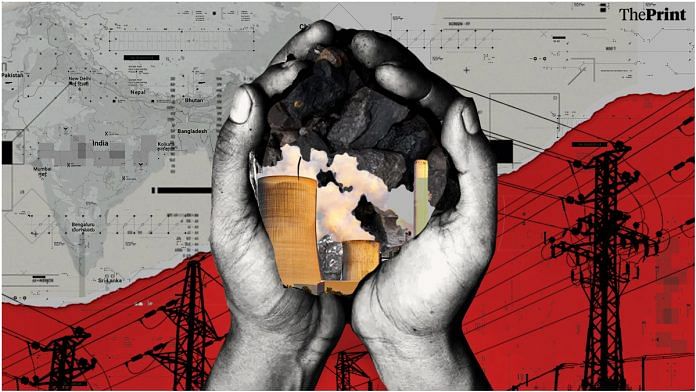The heatwave in late April and early May resulted in power shortages and soaring demand for electricity in many Indian states. Not only do these power outages make the heat unbearable, particularly for the poor, but there are also concerns about the detrimental impact on industrial production and the revival of the economy. While the heatwave has receded in the last few days, concerns about further power shortages in the coming summer months remain.
The impact of the heatwave was exacerbated by the extremely high prices of imported coal due to the war in Ukraine. It led to a decrease in electricity generation in power plants using imported coal and an increased reliance on domestic coal in plants that blend domestic and imported coal. Together, these events resulted in a sharp increase in the demand for domestic coal, which, in turn, strained the capacity of the railways to transport it from the mines to the power plants.
The Union government has taken several steps to resolve the current crisis, and these are welcome. However, it is important to recognise that the challenges arising from extreme weather conditions will keep growing and long-term systemic changes in planning in the energy sector will be necessary.
Extreme weather events will become more intense
India is particularly vulnerable to climate change. We are already experiencing its impact through many extreme weather conditions, and, as a 2021 Intergovernmental Panel on Climate Change (IPCC) report warned, they will become more frequent and intense. What was unthinkable earlier is now becoming the new normal, and therefore, we can no longer label extreme climate events as ‘unforeseeable’ but must prepare for them.
First, there must be a recognition of the increasing level of uncertainty we will see in the power sector in the coming decades. Its main source will be climate change and extreme weather events as the recent heatwave has demonstrated. It will be amplified by the increasing contribution from renewable energy (RE), whereby weather will affect not just the demand for energy but also its supply. In addition, many new technologies—energy storage devices like batteries, small modular (nuclear) reactors (SMRs), hydrogen use, and behind-the-meter technologies to make demand flexible—are undergoing rapid development. The performance and costs of these new technologies are not completely known, and that can add to the uncertainty.
Second, because of a higher level of uncertainty and the need to manage the associated risks, deterministic planning will have to be replaced by probabilistic approaches. Currently, most plans are developed on the basis of cost minimisation for a presumed set of future circumstances. There needs to be a shift to developing alternate plans and using probabilistic modelling to see how they perform under uncertain conditions. The preferred plan can then be selected on the basis of the best combination of low expected cost along with low variation in cost. Another criterion could be the lowest cost under worst-case conditions, more commonly known as ‘least regret’.
Third, planning will have to become adaptive. With greater unpredictability, plans will need to be monitored closely so that the course can be corrected to respond to both new knowledge and any unforeseen problems in implementation that may occur. Such monitoring and course correction can be facilitated by having, within the plan, signposts and decision points to respond to changes in the sectoral environment. Planning can be more adaptive if, instead of chunky generation capacity additions, additions are modular to minimise the risk of stranded assets. Fortunately, RE technologies allow such modularity and rapid installation of new generating capacity. SMRs, as and when they become commercially viable, would also be well-suited to such modularity.
Fourth, in the future, we will need much greater collaboration between electricity planners and climatologists. Probably the first of such a collaboration for a large study was used by Réseau de Transport d’Électricité (RTE), the French transmission system operator for Energy Futures 2050, whose results were released in February 2022. RTE obtained from Météo-France, the French meteorological service, many sets of detailed simulations of the possible weather in 2050. It used those simulations to stress-test RTE’s proposed power system for 2050. By using very granular data sets, RTE was able to maintain the spatial and temporal relationships between demand and RE generation, which are particularly important in assessing the adequacy of RE-rich power systems. It may not be easy to immediately replicate RTE’s work for India, but it should serve as a guide for the required changes to planning processes.
The recent power outages triggered by the early onset of summer should serve as a wake-up call to make the necessary changes to planning in the energy sector, so that we are prepared for the challenging future that lies ahead.
Daljit Singh is fellow at the Centre for Social and Economic Progress (CSEP), a Delhi-based not-for-profit think tank. Views are personal.
(Edited by Humra Laeeq)



